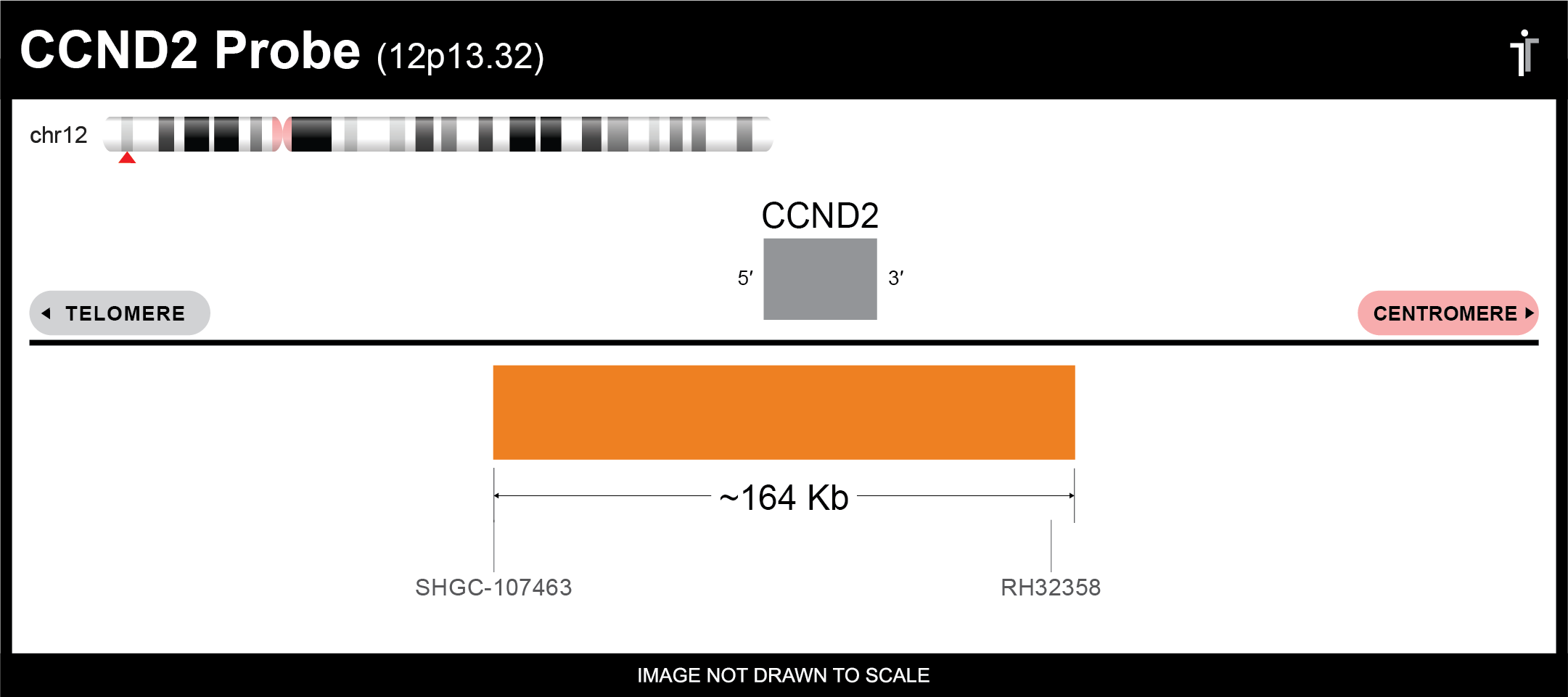CCND2 FISH Probe
Our CCND2 FISH probe is designed to detect CCND2 amplifications and deletions. The probe comes labeled in orange, but can be customized to meet your needs.

** This product is for in vitro and research use only. This product is not intended for diagnostic use.

| SKU | Test Kits | Buffer | Dye Color | Order Now |
|---|---|---|---|---|
| CCND2-20-OR (Standard Design) | 20 (40 μL) | 200 μL |

|
|
| CCND2-20-GO | 20 (40 μL) | 200 μL |

|
|
| CCND2-20-GR | 20 (40 μL) | 200 μL |

|
|
| CCND2-20-AQ | 20 (40 μL) | 200 μL |

|
|
| CCND2-20-RE | 20 (40 μL) | 200 μL |

|
Gene Summary
The protein encoded by this gene belongs to the highly conserved cyclin family, whose members are characterized by a dramatic periodicity in protein abundance through the cell cycle. Cyclins function as regulators of CDK kinases. Different cyclins exhibit distinct expression and degradation patterns which contribute to the temporal coordination of each mitotic event. This cyclin forms a complex with CDK4 or CDK6 and functions as a regulatory subunit of the complex, whose activity is required for cell cycle G1/S transition. This protein has been shown to interact with and be involved in the phosphorylation of tumor suppressor protein Rb. Knockout studies of the homologous gene in mouse suggest the essential roles of this gene in ovarian granulosa and germ cell proliferation. High level expression of this gene was observed in ovarian and testicular tumors. Mutations in this gene are associated with megalencephaly-polymicrogyria-polydactyly-hydrocephalus syndrome 3 (MPPH3). [provided by RefSeq, Sep 2014]
Gene Details
Gene Symbol: CCND2
Gene Name: Cyclin D2
Chromosome: CHR12: 4382901-4414522
Locus: 12p13.32
FISH Probe Protocols
| Protocol, Procedure, or Form Name | Last Modified | Download |
|---|